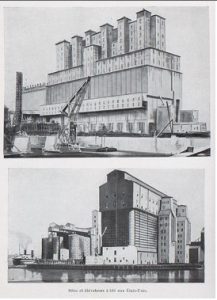Bauhaus: A Failed Utopia? (2)
Part Two: The strains of middle age

This is the second of a three-essay exploration of the history of The Bauhaus in light of the 100 year anniversary of its founding. The first essay (Bauhaus: A Failed Utopia? The Manifesto) can be found here.
Walter Gropius was fond of making claims about The Bauhaus like the following: “Our guiding principle was that design is neither an intellectual nor a material affair, but simply an integral part of the stuff of life, necessary for everyone in a civilized society.” Idealistic and vague, perhaps to a fault, but one gets the point. Bauhaus design was never intended to be alienating. It was supposed to be the opposite. It was supposed to preserve the relative “health” of the craft traditions while marching boldly into a new era. It was supposed to help cure the potential wounds of modern life, wounds caused, initially, by the industrial revolution and its jarring impact on everything from the natural landscape to the material and design of our cutlery. Anti-alienation was really the one guiding intuition behind The Bauhaus as a school and then, more amorphously, as a general approach to architecture and design.
Somehow, though, something changed. Perhaps this was due to the process by which Bauhaus ideas spread from Weimar and out into the world at large, including the historical circumstances by which leading practitioners of Bauhaus were driven from Germany (by Nazism) and then found themselves in places like England and America. Whatever its precise origin, by the 1960s and 70s, Bauhaus ideas were frequently cited not as a cure for alienation but rather as its cause.
In Alan Powers’ recently published book Bauhaus Goes West: Modern Art and Design in Britain and America, one can find the following passage:
In 1968 the critic Paul Overy quoted the remark of an art student whose response, ‘after glumly looking at photographs of J. J. P. Oud’s vast housing schemes for Rotterdam’ — schemes by an architect who was accorded a whole book in the Bauhausbücher series — was to ask, ’Well, they’ve won, haven’t they?’ Overy felt the same way, commenting that ‘One ought to examine the charge that the Bauhaus engendered as much bad design as good, i.e. the baleful profusion of egg-crate architecture that has sprung up in every civilized city since the last war’.
Tom Wolfe came to more or less the same conclusion, though he was, as usual, more acerbic about the matter. Here’s a typical line from Wolfe’s From Bauhaus to Our House:
“Every new $900,000 summer house in the north woods of Michigan or on the shore of Long Island has so many pipe railings, ramps, hob-tread metal spiral stairways, sheets of industrial plate glass, banks of tungsten-halogen lamps, and white cylindrical shapes, it looks like an insecticide refinery.”
It was, moreover, the thesis of Tom Wolfe that all these egg-crate insecticide refineries were essentially an invasive species of design and architecture, an unfortunate import that had come over from Mitteleuropa to infect the healthy American body. Speaking of America just after the end of WWII, Wolfe wrote that, “She was now one of the Great Powers, young, on the rise, bursting with vigor and rude animal health.” But for some inexplicable reason, which Wolfe attributes to gullibility and the unwillingness of Americans to trust their own instincts, the Euro-Bauhausian ideal found purchase on American soil, and thereby ruined the promise of this youthful vim and vigor.
Of course, the real story is a fair bit more complicated. Fiona MacCarthy’s recent biography of Walter Gropius (Gropius: The Man Who Built The Bauhaus) reveals that, even at a young age, Gropius found himself frequently influenced and inspired by American architecture and industrial design. Gropius directed his enthusiasm especially toward, of all things, American grain silos and elevators, and was referencing such structures in writings and lectures even before the founding of the first Bauhaus school in 1919. Gropius was fascinated by the way that grain elevators created monumental, architectural shapes out of reinforced concrete. He compared them to the ancient pyramids. Then, on a trip to America in the late 1920s, Gropius found even more to get excited about. As MacCarthy writes, “Gropius was of course especially delighted with Chicago’s simple industrial structures, the pioneering concrete construction of the Sears, Roebuck building, the massive silos and grain elevators he had venerated right from the start of his career.”
Was it then, in a sense, the American grain silo and Sears & Roebuck that corrupted the Bauhaus and not, as Wolfe would have it, the Bauhaus that corrupted innocent and folksy American architects? In fact, of course, neither thesis is true in total. A real shift in Gropius’ approach to architecture and design had already begun in the early Bauhaus. This shift was away from outright utopianism and toward a kind of realism about the forces of Modernity. By the 1920s, Gropius saw the writing on the wall. Industrial building materials and techniques were the reality of the day. His trip across America in 1928 only further confirmed this fact. As the grain silo example makes so wonderfully clear, even rural America was a place in which innovations in industrial design were transforming the landscape.
The job of Bauhaus, in Gropius’ eyes, was therefore to keep a human element alive within this new reality of architecture and design, to seize the opportunities of modern techniques and yet keep them relevant to human lives and creative energies﹣something fresh and vibrant and idealistic. The success of the Bauhaus Dessau buildings (the second location of the Bauhaus School) reflect this aspiration. The buildings, to many who lived in them at the time, created a sense of openness and freedom and collaboration. They were exciting to inhabit. Fiona MacCarthy quotes David Feist, a student at the Bauhaus in Dessau, upon first seeing the buildings there:
I was overawed and elated, puzzled and anxious all at the same time. This configuration of cubic units standing starkly isolated in an open space bordered by a tree-lined avenue on the far side was unlike anything I, or my parents, had ever seen. But for me it was the first document of a new spirit and a new reality that I longed to become part of.
The failure of critics like Wolfe is to be completely blind to the element of idealistic humanism that was always close to the heart of the Bauhaus movement and that so impressed young students like David Feist. What Bauhaus offered, at its best, was a way to use the new building and design materials of the 20th century to convey an unmistakable sense of a “new spirit” and a “new reality.”
The real challenge for Bauhaus in its Middle Period (let’s say, from the late 1930s into the 50s) then, was whether it could maintain this youthful idealism as many of its practitioners made their way from Germany and Central Europe to America in the lead-up to the Second World War. Bauhaus was always innovative and forward-looking when it came to materials and form. But could it also preserve the sense of whimsy and play, and the appreciation of the craft traditions that had so characterized its early history? Mies van der Rohe once wrote, “We must understand the motives and forces of our time and analyze their structure from three points of view: the material, the functional, and the spiritual.” The oft-voiced criticism of Bauhaus is that, as time went on, that third component dropped out almost entirely.
It’s worthwhile to ask why that happened. Why was Bauhaus unable to maintain its balance into the middle and later parts of the 20th century? Robert Hughes, the one critic caustic enough to out-snark Tom Wolfe, wrote a devastating review of From Bauhaus to Our House in Time Magazine. In that review, Hughes made the following crucial points:
Mainly, the glass box won because it was cheap to build. However, it might be that the American patrons of mainstream modernism were not as dumb or masochistic about their glass boxes as Wolfe thinks. What if they felt, on some instinctive level, that those cost-efficient termitaries with one marble foyer and a thousand Sheetrock cells disclosed some truth about power, conformism and social organization in American corporate life, a truth that the captains of industry and business embraced and wanted to perpetuate? What if the glass box was the all-American self-expression that Wolfe claims is not there?
That’s to say, Bauhaus in America probably tells us more about America than it does about Bauhaus. Or to put it another way, America has always been the place where, when idealism comes to meet reality, it loses. If, as Mies van der Rohe said, architects and designers must understand the material, functional, and spiritual forces of their time and place, then, in a sense, the Bauhausers who came to America in the mid-20th century might, like it or not, have understood those forces quite well. Wolfe’s rather simplistic fantasies about American youthful vigor aside, the juggernaut of American commercial society after WWII was a perfect place in which the spirit of Bauhaus could metastasize from the playful semi-organic forms and shapes of the teens and twenties, to the insecticide refineries of the 1950s.
There was a spiritual truth to post-war America. It’s just that the spiritual truth was one of concrete, steel and glass. It had hard lines and gleaming edges. It came in the shape of a box. American corporations and business leaders were interested in building cheaper and more efficient buildings, not in nurturing the wounded spirits of modern human beings struggling with amorphous feelings of alienation from contemporary life. Men like Walter Gropius and Mies van der Rohe (and plenty of the lesser architects and designers of Bauhaus along with them) wanted very much to build the great buildings of their time. In reality, this meant being willing to build a less and less interesting insecticide refinery, over and over again. They’d already gone all-in on the materials and forms of the new age. What else were they to do? It is from this perspective that the middle period of Bauhaus, the emergence and eventual triumph of egg crate architecture and design, can be seen more as a tragicomedy than as a crime.
In the third and final part of this essay, I will round out the Bauhaus story, bringing it from the 1960s into the present.


